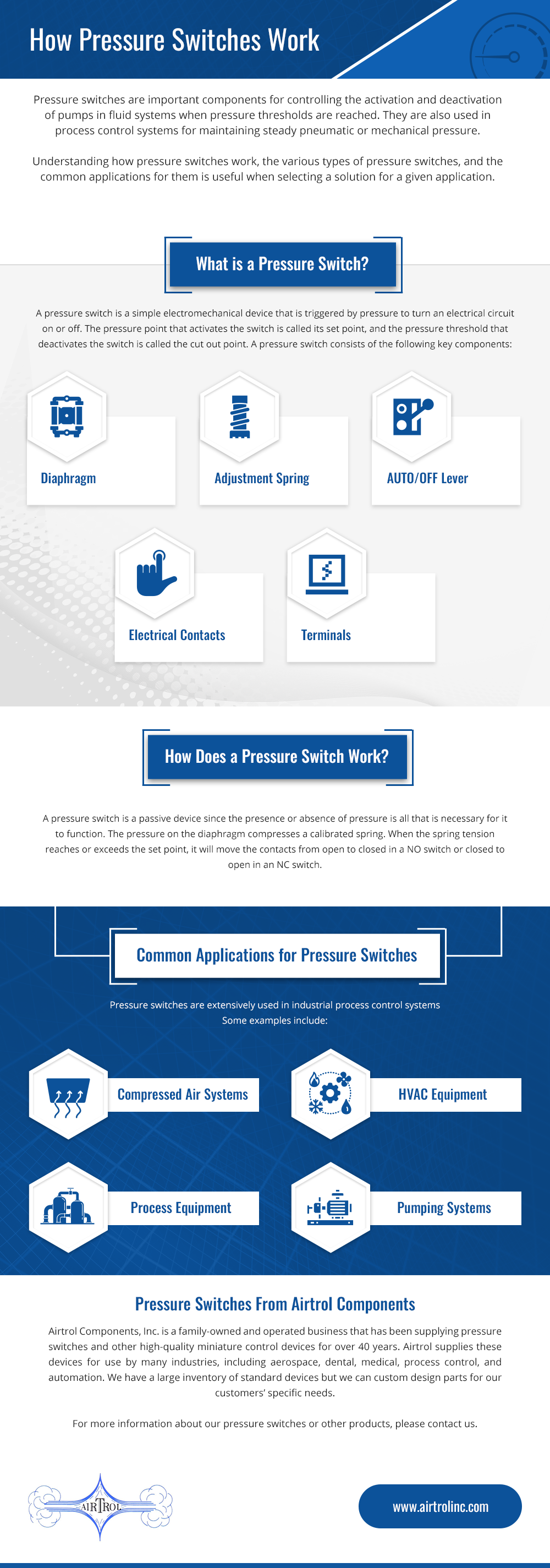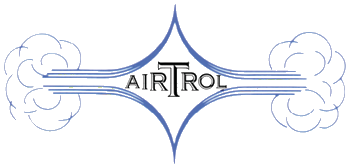How Pressure Switches Work
Pressure switches are important components for controlling the activation and deactivation of pumps in fluid systems when pressure thresholds are reached. They are also used in process control systems for maintaining steady pneumatic or mechanical pressure.
Understanding how pressure switches work, the various types of pressure switches, and the common applications for them is useful when selecting a solution for a given application.
What is a Pressure Switch?

- A diaphragm that acts as the pressure detection element. It is typically made of a pliable material that is sensitive to pressure.
- An adjustment spring to vary the set or cut out points. Some switches have separate springs for controlling the set and cut out points.
- An AUTO/OFF lever to activate the switch or to manually turn it off. This lever is useful for deactivating the switch during installation or maintenance. In some cases, it may be a knob instead of a lever, but the principle is the same.
- Electrical contacts that allow current from an external power source to pass through them when they touch.
- Terminals to connect the external power source to the contacts.
There are two types of pressure switches: normally open (NO) and normally closed (NC). The open/closed nomenclature refers to the electrical contacts in the switch. The contacts in a NO switch stay open when the pressure is within an acceptable range and close when the pressure falls outside the acceptable range.
For NC switches, the pressure threshold that changes the state of the contacts depends on the application. It may be the set point for some applications and the cut-out point for others.
How Does a Pressure Switch Work?
A pressure switch is a passive device since the presence or absence of pressure is all that is necessary for it to function. The pressure on the diaphragm compresses a calibrated spring. When the spring tension reaches or exceeds the set point, it will move the contacts from open to closed in a NO switch or closed to open in an NC switch.
For ease of configuration across different applications, it is common for pressure switches to contain at least one pair of NO and one pair of NC contacts.
Common Applications for Pressure Switches
Pressure switches are extensively used in industrial process control systems. Some examples include:
- Compressed air systems. Pressure switches turn on or turn off the compressor at the set point.
- HVAC equipment. Pressure switches serve an important safety function in heating systems such as furnaces. They will turn the furnace off upon detecting negative pressure generated by the draft-inducing motor. Pressure switches can also detect leaks by monitoring gas pressure.
- Process equipment. Fluid and gas flow control equipment use pressure switches to maintain a steady rate of flow.
- Pumping systems. Pressure switches help maintain water levels in a reservoir by activating or deactivating the pump as necessary. When the water pressure drops below a threshold, the NO contacts close to drive a current through the pump. When the water pressure reaches the set point, the contacts open to cut off current to the pump, thus ceasing the pumping operation.
Pressure Switches From Airtrol Components
Airtrol Components, Inc. is a family-owned and operated business that has been supplying pressure switches and other high-quality miniature control devices for over 40 years. Airtrol supplies these devices for use by many industries, including aerospace, dental, medical, process control, and automation. We have a large inventory of standard devices but we can custom design parts for our customers’ specific needs.
For more information about our pressure switches or other products, please contact us.

